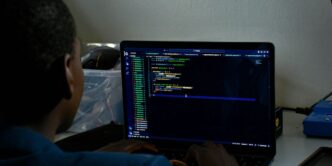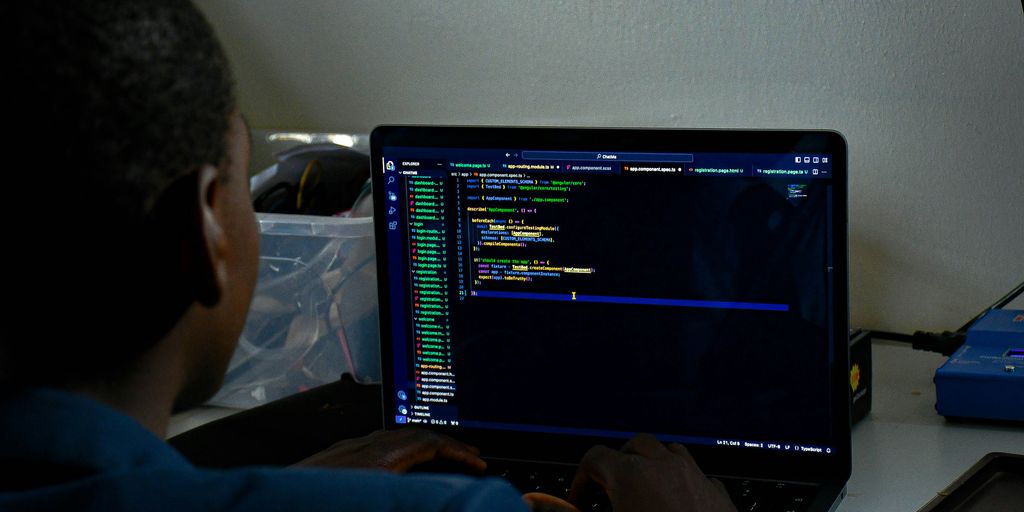So, you’re wondering, “can I learn JavaScript in a day?” It’s a common question, and honestly, it’s a bit tricky. Think of it like this: can you learn to play the guitar in a day? You might learn a few chords, strum a simple song, but you won’t be headlining concerts. Learning JavaScript in a day is kind of similar. You can get a taste, understand some basic ideas, but becoming a pro? That takes a lot more time and effort. This article will break down what you can realistically achieve in a single day and what comes next.
Key Takeaways
- A single day lets you grasp basic JavaScript ideas, not full mastery.
- Focus on core concepts like variables and simple functions for a quick start.
- Hands-on coding and quick feedback help a lot when you’re short on time.
- True skill and remembering things need ongoing practice, way beyond one day.
- A one-day effort can spark interest and set you up for more learning later.
Defining “Learning JavaScript” in a Day
It’s tempting to think you can become a JavaScript guru in 24 hours. Realistically, that’s not going to happen. But can you start learning JavaScript in a day? Absolutely! The key is to define what "learning" means in this context. Are we talking about writing complex applications, or grasping the basics? Let’s break it down.
Understanding Core Concepts Versus Mastery
There’s a huge difference between understanding the core concepts of JavaScript and achieving mastery. Think of it like learning a new language. You might learn basic greetings and phrases in a day, but you won’t be fluent. The same applies to JavaScript. You can learn about variables, functions, and loops, but mastering these concepts takes time and practice. It’s about exposure and repetition. You can get a taste, but not the whole meal.
Setting Realistic Expectations for a Single Day
Okay, so you’re not going to be a JavaScript expert tomorrow. What can you realistically expect to achieve? A good goal is to understand the basic syntax, data types, and control flow. You might be able to write a simple script that manipulates the DOM (Document Object Model) or handles user input. Don’t aim for building a full-fledged web application. Aim for understanding the basic syntax. Think of it as laying the foundation for future learning. It’s about building a base to grow from.
The Breadth of JavaScript’s Ecosystem
JavaScript isn’t just a language; it’s an ecosystem. There are frameworks like React, Angular, and Vue.js. There are libraries like jQuery. There are build tools, testing frameworks, and a whole lot more. Trying to learn all of this in a day is impossible. Focus on the core language first. You can explore the ecosystem later. Think of it as learning to drive before trying to understand how the engine works. Get the basics down, then explore the advanced stuff. It’s a journey, not a sprint.
Foundational JavaScript Concepts for Beginners
Basic Syntax and Structure
Okay, so you want to learn JavaScript? First things first, you gotta get the basics down. Think of it like learning a new language – you start with the alphabet and grammar. In JavaScript, that means understanding how to write statements, use semicolons (or not!), and structure your code. JavaScript syntax is pretty forgiving, but consistency is key for readability.
- Statements usually end with semicolons, but JavaScript can often infer them.
- Code is organized into blocks using curly braces
{}. - Comments are super important for explaining what your code does. Use
//for single-line comments and/* ... */for multi-line comments.
Variables, Data Types, and Operators
Variables are like containers for storing data. You use keywords like let, const, and (less commonly these days) var to declare them. Data types define what kind of data a variable can hold – numbers, strings, booleans (true/false), and more. Operators are symbols that perform operations on variables and values. Understanding variable scope is also important.
letis used for variables that can be reassigned.constis for variables that should not be reassigned.- Common operators include
+(addition),-(subtraction),*(multiplication),/(division), and=(assignment).
Functions and Control Flow
Functions are reusable blocks of code that perform a specific task. They’re essential for organizing your code and making it more modular. Control flow statements like if, else if, and else allow you to execute different code blocks based on conditions. Loops like for and while let you repeat code blocks multiple times. Learning about arrow functions is also a good idea.
- Functions are defined using the
functionkeyword, or with arrow functions() => {}. if/elsestatements execute code based on whether a condition is true or false.forloops are great for iterating over arrays or performing a task a specific number of times.
Practical Approaches to a One-Day JavaScript Dive

Focusing on Interactive Web Development
If you only have a day, don’t try to learn everything. Concentrate on making things happen on a webpage. Think about how users interact with websites. What makes a button click do something? How do forms send data? These are great starting points. Forget complex algorithms for now; focus on the basics of manipulating the DOM (Document Object Model). This means learning how to change content, styles, and attributes of HTML elements using JavaScript. It’s way more rewarding to see immediate results than to get bogged down in theory.
Leveraging Online Tutorials and Crash Courses
There’s a ton of free stuff online. YouTube is your friend. Look for tutorials specifically designed for beginners or "crash courses." These are usually fast-paced and cover the essentials. Just be sure to pick ones that focus on practical examples. Some things to keep in mind:
- Choose a recent tutorial: JavaScript changes fast, so older tutorials might use outdated methods.
- Follow along actively: Don’t just watch; type the code yourself. You’ll learn way more by doing.
- Don’t be afraid to pause and rewind: It’s okay to not get everything the first time. Take your time.
- Look for tutorials that build a small project: Working on a project, even a simple one, helps solidify your understanding.
Also, consider interactive coding platforms. These let you write and run code directly in your browser, which is super convenient. A 30-day plan can help you stay on track.
Hands-On Coding and Immediate Feedback
Theory is important, but coding is king. Set up a simple HTML file with a <script> tag and start experimenting. The best way to learn is by doing. Try changing the text of a paragraph, making an image appear when a button is clicked, or validating a simple form. Use your browser’s developer console to see errors and debug your code. Don’t just copy and paste code; type it out yourself. This helps you remember the syntax and understand what’s going on. The immediate feedback you get from seeing your code work (or not work!) is invaluable. It’s like a mini-game where you’re constantly solving puzzles. Plus, you can find a coding book to help you get started.
The Limitations of a Single Day’s Learning
Okay, so you’re pumped to learn JavaScript in a day. That’s awesome! But let’s be real, there are some serious limits to what you can actually accomplish in such a short time. It’s like trying to read every book in a library – you might see the titles, but you won’t absorb much.
Lack of Deep Understanding and Retention
One day isn’t enough to truly grasp JavaScript concepts. You might learn the syntax, but understanding why things work the way they do takes time and practice. It’s easy to forget what you crammed in after just a few days. Think of it like memorizing lines for a play the night before – you might nail the performance, but you won’t remember them a week later. You might be able to write some basic code, but debugging and troubleshooting? That’s a whole different ballgame that requires real experience. This is where technical skills mastering comes into play.
Missing Advanced Topics and Best Practices
JavaScript is HUGE. In a single day, you’ll barely scratch the surface. You’ll miss out on:
- Advanced concepts like closures, prototypes, and asynchronous programming.
- Important topics like testing, security, and performance optimization.
- Best practices for writing clean, maintainable code.
It’s like learning to drive but only practicing in an empty parking lot. You’ll know how to steer, but you won’t be prepared for real-world traffic or tricky situations. You won’t learn about design patterns or how to structure a large application. These things take time and exposure.
The Importance of Consistent Practice
Learning to code is like learning a musical instrument. You can’t just cram for a day and expect to be a virtuoso. It requires consistent practice and repetition. You need to write code, break code, and fix code – over and over again. A single day can give you a taste, but it won’t turn you into a JavaScript developer. Think of it as planting a seed. You need to water it regularly and give it sunlight for it to grow. Without consistent effort, your newfound knowledge will wither away. You need to build projects, contribute to open source, and constantly challenge yourself to improve. That’s the only way to truly master JavaScript.
Beyond the First Day: What Comes Next?
Okay, so you’ve spent a day trying to learn JavaScript. You’ve probably got a basic grasp of some concepts. But what happens now? A single day is just the starting point. It’s like learning a few chords on a guitar – you can play something, but you’re not exactly Jimi Hendrix yet. The real learning begins after that initial spark.
Building on Foundational Knowledge
Think of that first day as laying the foundation for a house. You’ve got the concrete slab, but you still need to build the walls, roof, and everything else. Now’s the time to solidify what you’ve learned. Go back over the basics: variable naming, data types, functions, and control flow. Practice writing small programs that use these concepts. Don’t just read about it; actually do it. Try rewriting code examples from tutorials without looking at the original. Experiment and see what happens when you change things. This is how you move from knowing about JavaScript to actually understanding it.
Exploring Frameworks and Libraries
Once you’re comfortable with the fundamentals, it’s time to explore the wider world of JavaScript. This means diving into frameworks and libraries. React, Angular, and Vue.js are popular choices for building user interfaces. Node.js lets you use JavaScript on the server-side. Libraries like jQuery (though less popular now) can simplify common tasks. Don’t try to learn everything at once. Pick one framework or library that interests you and focus on learning the basics. There are tons of online resources to help you get started. Think of frameworks as pre-built tools that help you build bigger and better things faster. For example, you can use ES6 Every Day to improve your coding skills.
Continuous Learning and Project Application
Learning JavaScript is a marathon, not a sprint. The language is constantly evolving, with new features and best practices emerging all the time. The best way to keep up is to make learning a continuous process. Read blogs, follow developers on social media, and participate in online communities. But most importantly, build projects. Start small and gradually increase the complexity. Building projects is the best way to apply what you’ve learned and identify areas where you need to improve. Plus, having a portfolio of projects is a great way to show off your skills to potential employers. Consider working on interactive web development projects to apply your knowledge. Remember, the goal isn’t just to learn JavaScript, but to use it to create something cool.
Optimizing Your One-Day JavaScript Experience
So, you’re trying to cram some JavaScript into a single day? It’s ambitious, but doable if you play your cards right. It’s all about making the most of the limited time you have. Let’s talk about how to optimize that learning experience.
Prioritizing Key Learning Objectives
Don’t try to boil the ocean. Pick a few essential JavaScript concepts to focus on. Trying to learn everything at once is a recipe for disaster. What are your goals? Do you want to manipulate the DOM? Understand variables and data types? Get a handle on functions? Choose a few things and stick to them. For example, if you’re interested in interactive front-end development, focus on DOM manipulation and event handling.
Minimizing Distractions and Maximizing Focus
This is a no-brainer, but it’s worth repeating. Turn off social media, silence your phone, and find a quiet place to work. Let your family or roommates know you need uninterrupted time. The Pomodoro Technique (25 minutes of focused work followed by a 5-minute break) can be surprisingly effective. Seriously, those notifications can wait. Here’s a quick breakdown:
- Preparation: Define your learning goal for the Pomodoro.
- Work: Focus intently on the task for 25 minutes.
- Short Break: Take a 5-minute break to rest and recharge.
- Repeat: Do four Pomodoros, then take a longer break (20-30 minutes).
Utilizing Effective Learning Resources
Not all tutorials are created equal. Some are amazing, some are terrible. Look for resources that are well-structured, clear, and concise. Interactive tutorials where you can write code and see the results immediately are ideal. Here are some ideas:
- Interactive Coding Platforms: Sites like Codecademy and freeCodeCamp offer structured JavaScript courses with immediate feedback.
- Focused Crash Courses: Look for courses specifically designed to teach the basics quickly.
- Official Documentation: The Mozilla Developer Network (MDN) is an excellent resource for understanding JavaScript concepts in detail. It’s a bit dense, but it’s accurate. Also, consider using a JavaScript coding book for beginners.
The Value of a “Can I Learn JavaScript in a Day” Mindset
It might sound crazy, but even attempting to learn JavaScript in a single day can be surprisingly useful. It’s not about becoming an expert, but about sparking something. Let’s break down why this approach, despite its limitations, can be a good starting point.
Igniting Initial Interest and Motivation
Sometimes, the biggest hurdle is just getting started. The idea of mastering a whole programming language can be overwhelming, leading to procrastination. Framing it as a one-day challenge makes it less daunting and more approachable. It’s like saying, "Okay, I’ll just dip my toes in," which can then lead to, "Hey, this isn’t so bad!" and then, "I want to learn more!" It’s a great way to overcome initial inertia and build momentum. Think of it as a quick win that fuels further exploration. This can be one of the 8 daily habits that will transform your life.
Gaining a High-Level Overview
Even if you only scratch the surface, a day of focused learning can give you a bird’s-eye view of JavaScript. You’ll start to see how different concepts like variables, functions, and the DOM fit together. It’s like looking at a map before a road trip – you might not know every back road, but you get a sense of the overall landscape. This high-level understanding can be incredibly helpful when you start diving deeper into specific topics later on. You’ll have a context for what you’re learning, making it easier to connect the dots.
Setting the Stage for Future Learning
That initial day isn’t the end; it’s the beginning. It’s about laying the groundwork for more structured and in-depth learning. By getting a taste of JavaScript, you can identify areas that particularly interest you or that you find challenging. This helps you tailor your future learning efforts, focusing on what matters most to you. It also gives you a better understanding of what resources and learning styles work best for you. It’s like a trial run that informs your long-term learning strategy. You might even find yourself looking at interactive front-end development.
Here’s a simple analogy:
| Stage | Description |
|---|---|
| Day 1 | Quick overview, initial exposure, identify areas of interest. |
| Subsequent Days | Focused learning, deeper dives, project-based practice, continuous improvement. |
So, Can You Really Learn JavaScript in a Day?
Alright, so after all that, the short answer is no, not really. You can get a taste, sure, maybe learn a few basic things. But becoming good at JavaScript, or any coding language for that matter, takes time. It’s like trying to learn to play the guitar in a day. You might strum a chord or two, but you won’t be playing a concert. The real trick is to keep at it, little by little. Consistency is way more important than trying to cram everything into one super long day. Just keep practicing, and you’ll get there.
Frequently Asked Questions
Can I really learn JavaScript in just one day?
While you can pick up the very basics of JavaScript in a day, becoming truly good at it takes much longer. Think of it like learning to ride a bike: you can learn to pedal and steer in a day, but becoming a pro cyclist takes years of practice.
What are the most important things to learn first?
A good starting point is to learn about variables (ways to store information), data types (different kinds of information like numbers or words), simple math operations, and how to make the computer follow instructions step-by-step (control flow).
How should I spend my one day learning JavaScript?
The best way is to jump right in and try coding! Use online lessons that let you type code and see what happens right away. Focus on making small, interactive things on a webpage to see your progress.
What are the downsides of only learning for a day?
One day is not enough time to really understand everything deeply or remember it all. You’ll miss out on harder topics and the best ways to write code. Learning anything well needs steady practice over time.
What should I do after my first day of learning?
After your first day, keep building on what you learned. Look into more advanced tools and libraries that help you build bigger projects. The key is to keep learning and trying new things.
Is there any good reason to try learning JavaScript in just one day?
Even a short burst of learning can get you excited and show you what JavaScript is all about. It gives you a quick look at the big picture and sets you up to learn more later if you want to.














